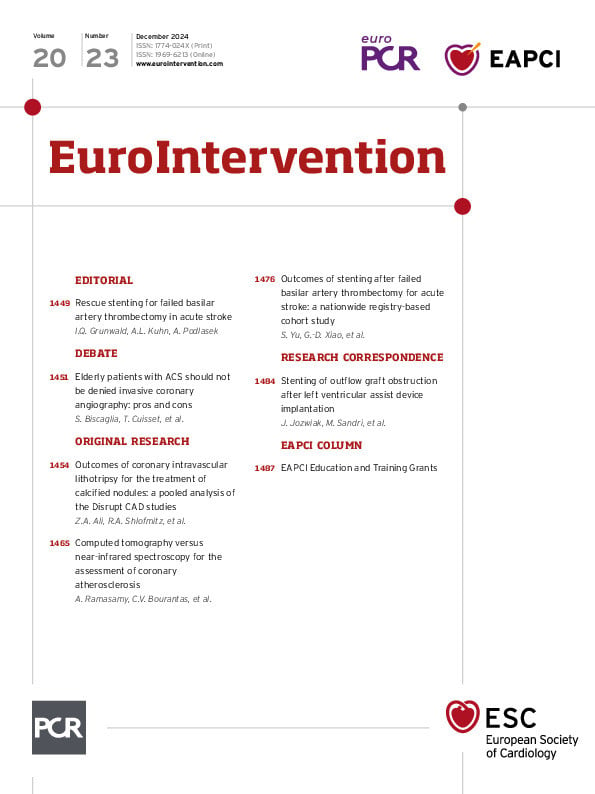One look at the title and you can see how vast our interventional field is! The techniques we use are multiple, the amount of literature immense – that’s why we’re here with each issue, choosing articles of value to help illuminate one of many topics we’re sure you’ll find of interest.
Should your elderly acute coronary syndrome patients have routine invasive coronary angiographies?
That’s the question for this issue’s debate, and one that provoked much discussion after the release of the SENIOR-RITA Trial. Here, Simone Biscaglia and Gianluca Campo argue the pros and Thomas Cuisset and Guillaume Cayla argue the cons of whether elderly acute coronary syndrome patients should undergo invasive treatment or not. What’s your opinion?
Intravascular lithotripsy in calcified nodules
Using optical computed tomography, Ziad A. Ali, Richard A. Shlofmitz and colleagues evaluated acute and long-term outcomes of intravascular lithotripsy-assisted PCI in calcified nodules. They found that the use of intravascular lithotripsy was associated with comparable stent expansion and luminal gain in lesions with and without calcified nodules, warranting future studies on clinical outcomes.
Assessing coronary atherosclerosis with coronary computed tomography angiography vs near-infrared spectroscopy
In this paper, Anantharaman Ramasamy, Christos V. Bourantas and colleagues compare the efficacy of coronary computed tomography angiography (CCTA) against near-infrared spectroscopy-intravascular ultrasound in evaluating atheroma burden and composition as well as its potential for guiding coronary interventions. CCTA was found to have limitations on both fronts, raising questions about its value in guiding revascularisation.
Stenting outcomes after failed basilar artery thrombectomy in acute stroke
Shuai Yu, Guo-Dong Xiao and colleagues present a study on the clinical safety and efficacy of rescue intracranial stenting in patients with acute basilar artery occlusion after failed thrombectomy. Although rescue intracranial stenting proved to be feasible and improved reperfusion for many patients, there were no significant improvements in the mortality rate or long-term neurological outcomes.
Using stenting to treat outflow graft obstruction after left ventricular device implantation
In this research correspondence, Joanna Jozwiak, Marcus Sandri and colleagues report on their centre’s experience in stenting outflow graft obstructions after the implantation of a left ventricular assist device. The authors confirmed that stenting was found to be a safe and feasible procedure in high-risk patients, and thus a promising and viable alternative to redo surgery.

